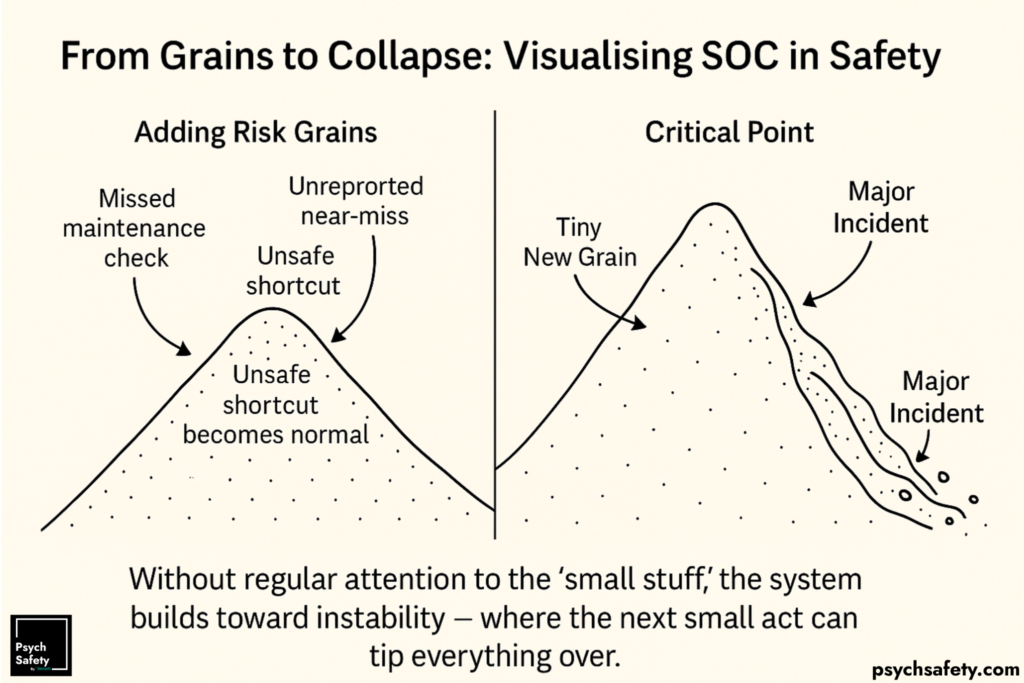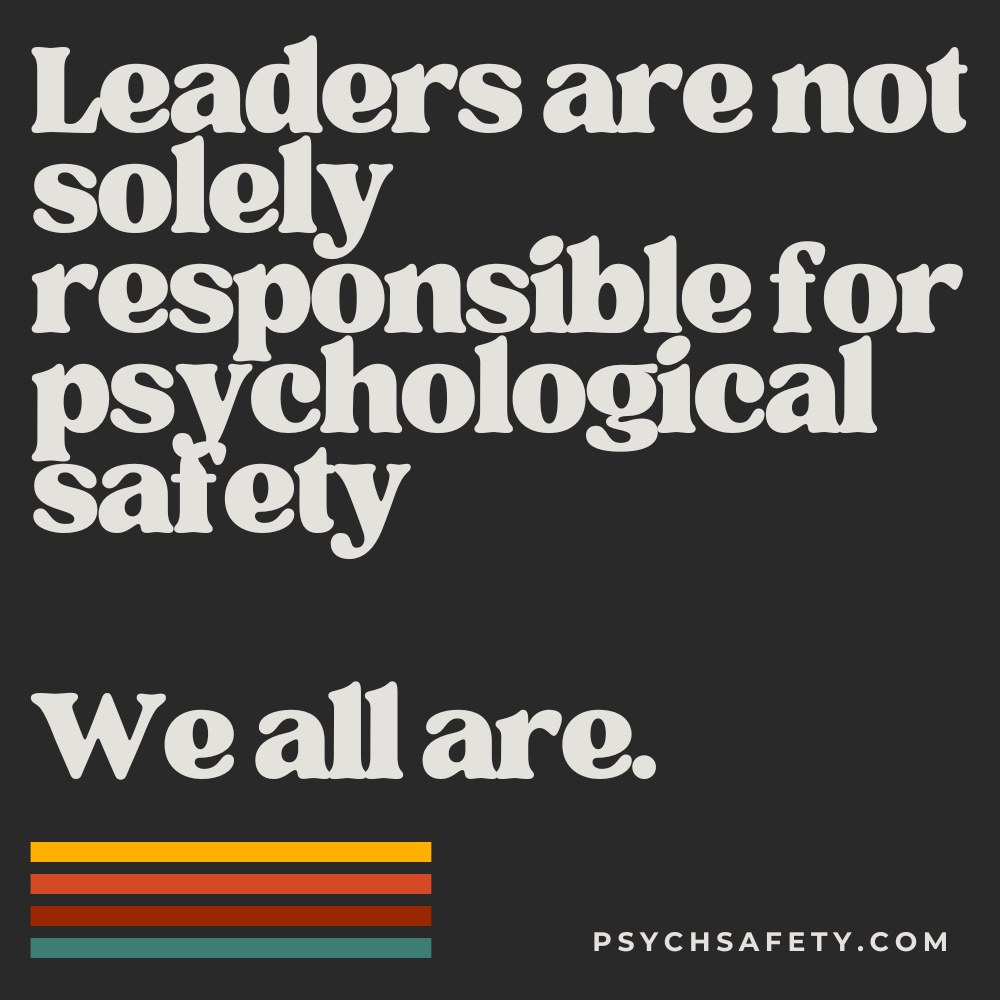by Navya Adhikarla
When we talk about creating inclusive workplaces, we often discuss accessibility and psychological safety as separate initiatives. Accessibility (also abbreviated as a11y) focuses on removing physical and digital barriers, while psychological safety addresses the emotional and social dynamics that allow people to be themselves at work. Yet through my experience as a neurodivergent disabled person, I’ve observed something powerful: these elements don’t just coexist—they actively reinforce each other, creating a virtuous cycle that transforms workplace culture.
In my previous article, I shared my personal journey as a neurodivergent disabled person navigating workplace accessibility and I also explored how my experiences revealed a deeper connection between accessibility and psychological safety – two concepts that, while often discussed separately, are profoundly interconnected in shaping inclusive workplaces.
Additionally, through my experiences, I’ve also developed a way of understanding how invisible barriers impact authentic engagement between humans. These barriers create hidden challenges in workplace interactions. This insight led me to develop a concept I call: “Psychological Accessibility”; a concept that sits at the heart of this symbiotic relationship between a11y and psychsafety.
The Multifaceted Nature of Accessibility
Consider the various dimensions of accessibility:
Digital accessibility ensures websites and technologies are barrier-free, serving people with physical disabilities, situational limitations, and varying socio-economic conditions. As Wikipedia notes, “Web accessibility is the inclusive practice of ensuring there are no barriers that prevent interaction with, or access to, websites.” This extends beyond disability accommodation to create universal access to information and functionality.
Physical accessibility, through Universal Design principles, creates spaces that welcome everyone, regardless of age, size, ability, or disability. The Center of Excellence for Universal Design emphasizes this isn’t a special accommodation for a minority—it’s simply good design that benefits all.
But accessibility transcends these tangible aspects.
When accessibility reaches its highest form, it transcends physical and digital considerations to become psychological. This transformation occurs when individuals can navigate spaces and interact with systems effortlessly, allowing them to focus on meaningful participation rather than overcoming barriers. This is where the road to psychological safety begins.

Imagine a workplace where a deaf employee doesn’t have to think twice about joining impromptu team discussions because real-time captioning is automatically enabled in every meeting. Or consider a neurodivergent developer who can focus entirely on solving complex problems because their team naturally communicates in their preferred style – using clear, written instructions with visual aids. Another example is when a team member with anxiety can fully engage in brainstorming sessions because everyone uses a mix of verbal and written contributions as standard practice, not as a special accommodation.
Through my experiences navigating both technical leadership and neurodivergence, I’ve observed a gap in how we think about accessibility. While physical and digital accessibility are well-established concepts, I’ve identified “Psychological Accessibility”—a distinct mechanism that shapes how people engage with their environment and each other. While traditional accessibility focuses on how people interact with their physical environment, psychological accessibility extends this concept to human-to-human interaction. This isn’t a concept found in traditional accessibility literature or organizational psychology; rather, it emerged from my personal journey and ongoing reflection about what makes spaces truly accessible at a cognitive and emotional level.
Psychological accessibility serves as a key enabler of psychological safety by addressing a critical question: How do people actually know how to engage?
In other words, it attempts to operationalize a key element of psychological safety.
For me, a disabled person in the workplace, accessibility is more than accommodations because the most challenging barriers aren’t only external obstacles, but invisible walls of uncertainty, misunderstanding, and disconnection. In other words, this means: cognitive friction when social cues don’t align with expectations, uncertainty about communication preferences, and anxiety around seeking help or feedback.
Psychological accessibility emerges when individuals can move through spaces and systems effortlessly, focusing on meaningful participation rather than overcoming barriers.
However, unlike psychological safety, which is about the overall climate of trust and feeling safe to take interpersonal risks, psychological accessibility focuses on the specific mechanisms that enable engagement. It’s about proactively designing interactions and environments to foster trust, approachability, and clarity.
Moving Forward
Practical examples of psychological accessibility tools include:
- Personal README documents that explicitly outline communication preferences, working styles, and potential communication challenges
- Team charters that clarify engagement protocols, communication norms, and expected behaviors
- Structured feedback mechanisms that provide clear pathways for sharing concerns
- Communication guides that outline preferred communication channels and response expectations
These tools differ from psychological safety in a crucial way: while psychological safety is the outcome (feeling safe to speak up, take risks, and be vulnerable), psychological accessibility provides the actual mechanisms that make such safety possible. It’s the infrastructure that supports psychological safety.
Understanding psychological accessibility as a mechanism rather than an outcome helps us design more effective environments and interactions. By focusing on specific, actionable elements that enable engagement, we create the foundation for:
- Authentic leadership through relational transparency (Note: Relational transparency, a key component of Authentic Leadership, means being open and honest about who you are at work – sharing your thoughts, admitting when you don’t know something, and being clear about your needs and challenges. It’s like having a clear glass window between you and your team, rather than a wall.)
- Increased psychological safety through clear engagement pathways
- Enhanced inclusion through multiple access points
- Improved performance through reduced barriers to participation
The key lies in recognizing that psychological accessibility isn’t just about creating psychologically safe spaces—it’s about building clear, well-defined mechanisms that enable people to engage effectively and authentically within those spaces. This framework, while emerging from personal experience, has the potential to reshape how we think about creating truly inclusive environments that work for everyone.
Looking back on the journey exploring these ideas, I keep coming back to one profound insight: when psychological safety and accessibility are brought together, they allow for true inclusion. It is not just a theory for me anymore, because I have witnessed it myself: In spaces that are physically, technologically, and psychologically accessible to me, I bring my authentic self to contribute, engage, and thrive.
The post Psychological Accessibility: A Discovery in Workplace Inclusion appeared first on Psych Safety.





